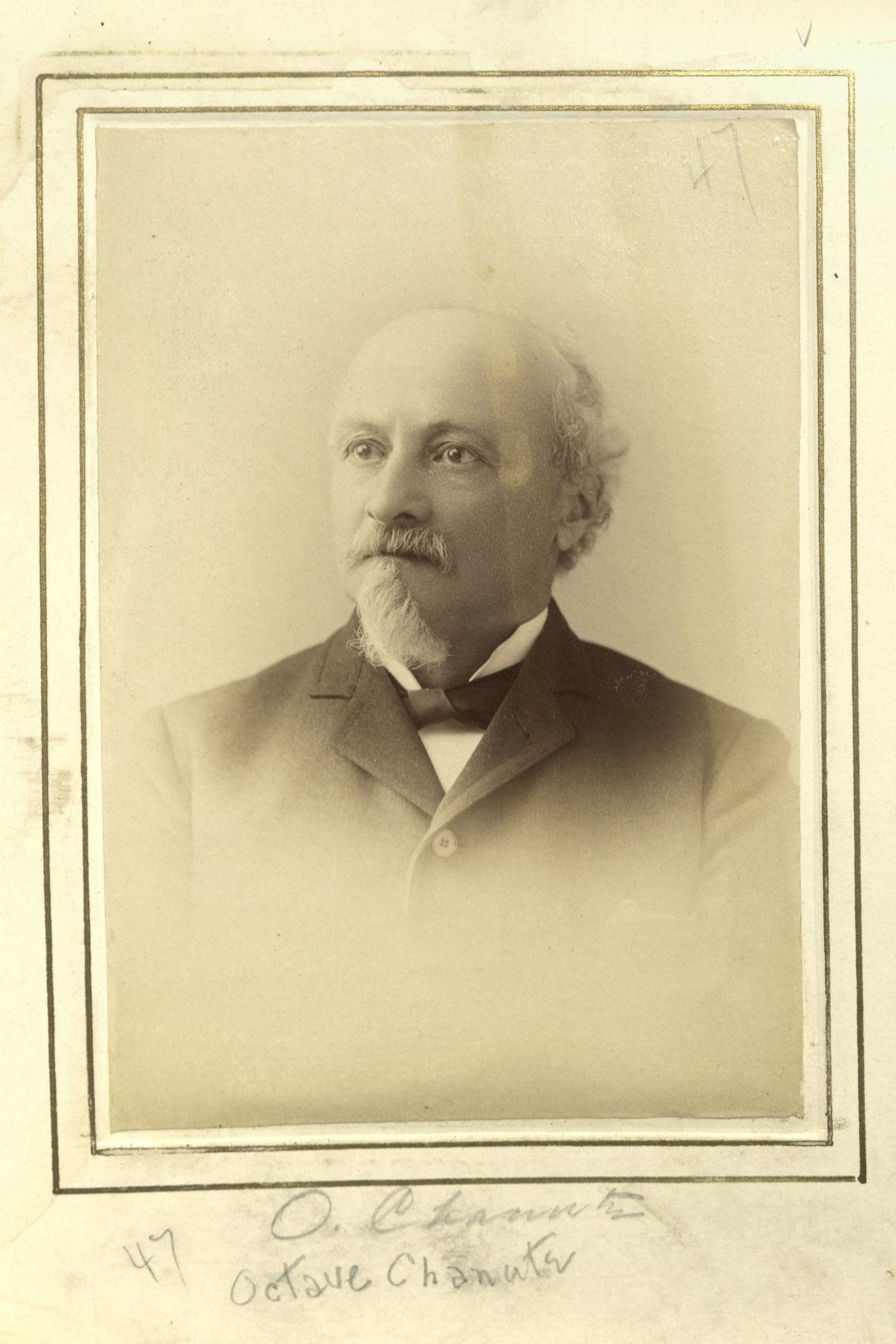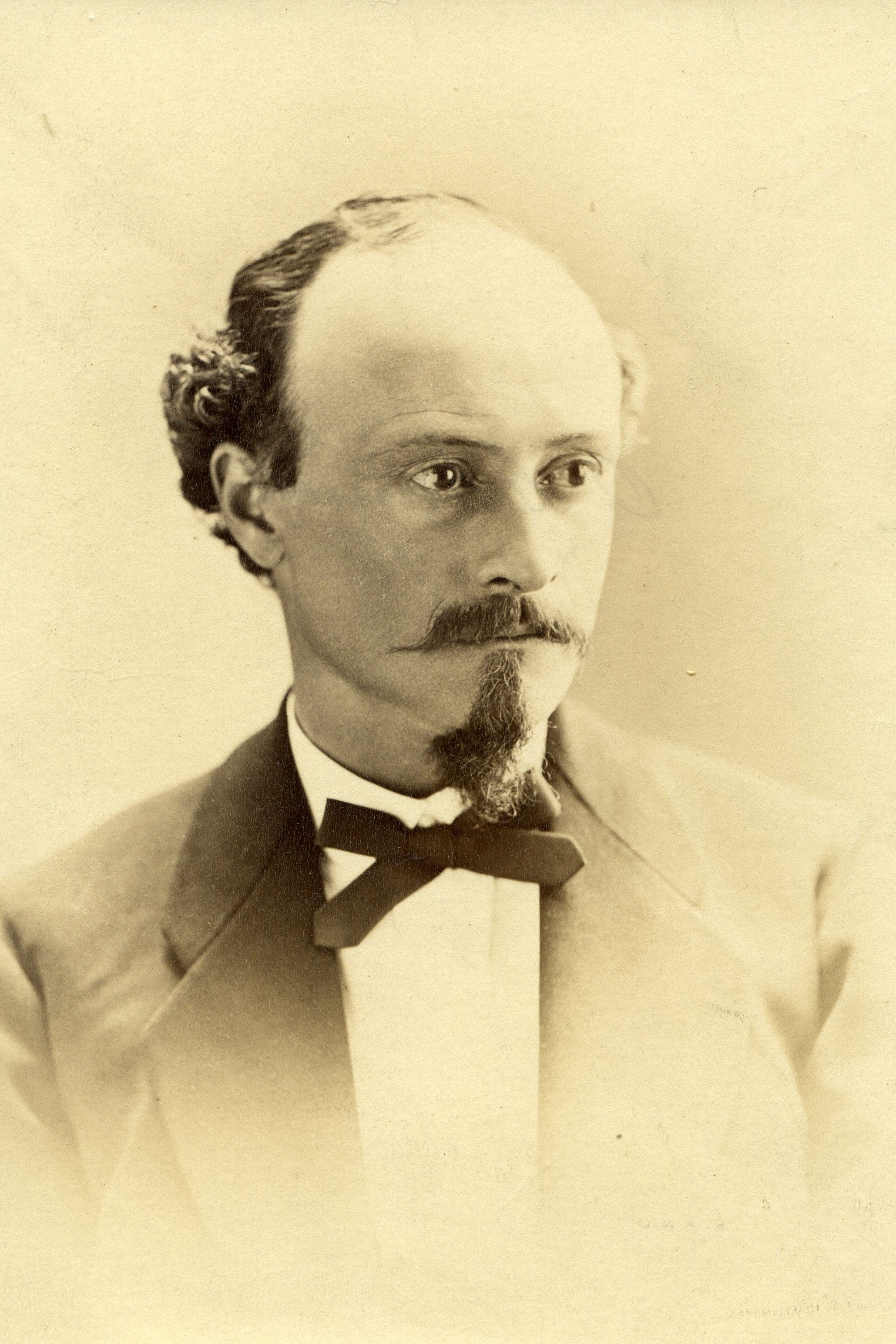Civil Engineer
Centurion, 1875–1910
Born 18 February 1832 in Paris, France
Died 23 November 1910 in Chicago, Illinois
Buried Springdale Cemetery and Mausoleum , Peoria, Illinois
, Peoria, Illinois
Proposed by Abram S. Hewitt and David Van Nostrand
Elected 1 May 1875 at age forty-three
Proposer of:
Seconder of:
Century Memorials
Octave Chanute began work on the construction of the Hudson River railway when he was seventeen years of age, under John B. Jervis, and he was division superintendent when only twenty-one. He was born in Paris, France, in 1832, and came to this country when he was six years old, with his father who had become Vice-President of Jefferson College, Louisiana. Chanute was educated in New York, and his career was in the West, where he was connected with many important enterprises, railways, the stock yards in Chicago and Kansas City, and bridge building. He built the pioneer bridge across the Missouri. In 1873 he came again to New York and for ten years was engaged in rebuilding the Erie railway. In 1875 he became, to his great pleasure, a member of The Century. In 1884 he went West again and continued there, living in Chicago as consulting engineer, until his death.
Possibly his fame will rest on his avocation, the study of flying machines. He began this study in 1874 and then gave it up for years as involving too much time. In 1888 he again took up the subject first from the theoretical point of view and then making gliding experiments, publishing his results, in 1894 in a book entitled, Progress in Flying Machines. In a paper published in 1897 he invited other experimenters to improve upon his work, and in response Wilbur Wright wrote him as to the construction of such machines, the materials to be used, and the best place for experimentation, information which was gladly given. From 1901–05 he made many calculations for Wrights and supplied them with information and advice.
In both his vocation and his avocation he received wide recognition, being member and president of engineering and aëronautical societies. The Aëronautical Society of Great Britain made him an honorary member and gave him a gold medal, and the University of Illinois made him Doctor of Engineering in 1905.
Though for many years little seen in New York and known to few of us he was a well-educated, well-bred gentleman, distinguished in his profession, glad to be a member of this association, and thus worthy of our highest word of praise, a good Centurion.
George William Knox
1911 Century Association Yearbook
Chanute was a French-born American railway engineer and aviation pioneer who provided the Wright brothers with help and advice. He was widely considered a brilliant and innovative railroad engineer and during his career he designed and constructed the country’s two biggest stockyards: the Union Stock Yards in Chicago (1865) and Kansas City Stockyards (1871). He designed and built the Hannibal Bridge, the first bridge to cross the Missouri River in Kansas City, Missouri, in 1869.
Chanute was elected to the Century in 1875, the same year that he became interested in aviation during a visit to Europe. When he retired from his engineering business in 1890, he decided to devote his time to furthering the new science of aviation. He published a series of articles in The Railroad and Engineering Journal from 1891 to 1893, and collected together in Progress in Flying Machines in 1894. This was the first organized, written collection of aviation research.
Although he was too old to attempt to fly himself, Chanute worked in partnership with younger experimenters, including Augustus Herring and William Avery. In 1896 and 1897 the three tested hang gliders. Chanute was in contact with the Wright brothers from 1900, when Wilbur Wright wrote to him after reading Progress in Flying Machines. Chanute helped to publicize the Wright brothers’ work, and provided consistent advice and encouragement, visiting their camp near Kitty Hawk in 1901, 1902, and 1903.
Chanute freely shared his knowledge about aviation with anyone who was interested and expected others to do the same. His open approach led to friction with the Wright brothers, who believed their ideas about aircraft control were unique and refused to share them. Despite the friction, when Chanute died in 1910 in Chicago, Wilbur Wright delivered the eulogy at his funeral.
James Charlton
“Centurions on Stamps,” Part I (Exhibition, 2010)


